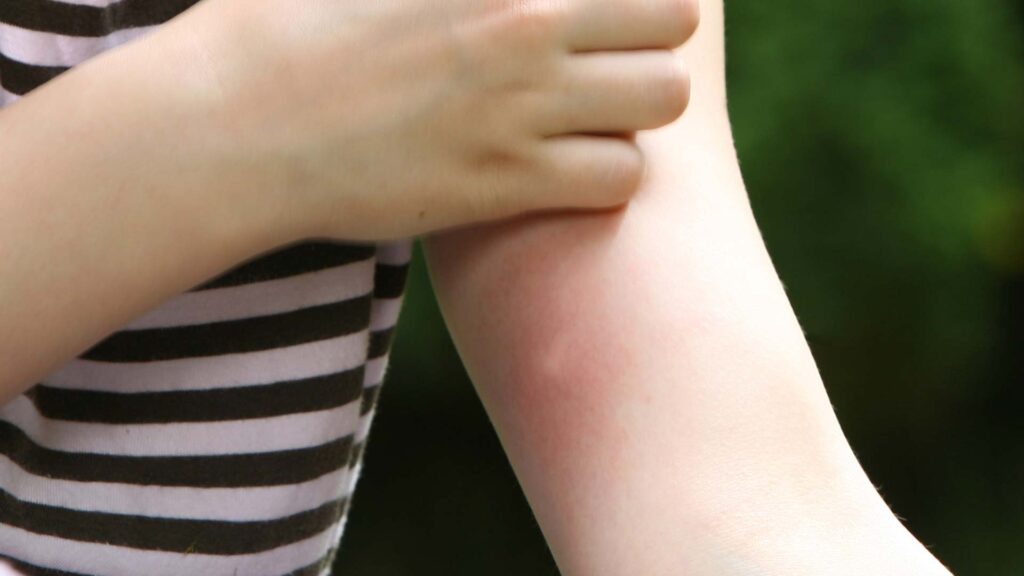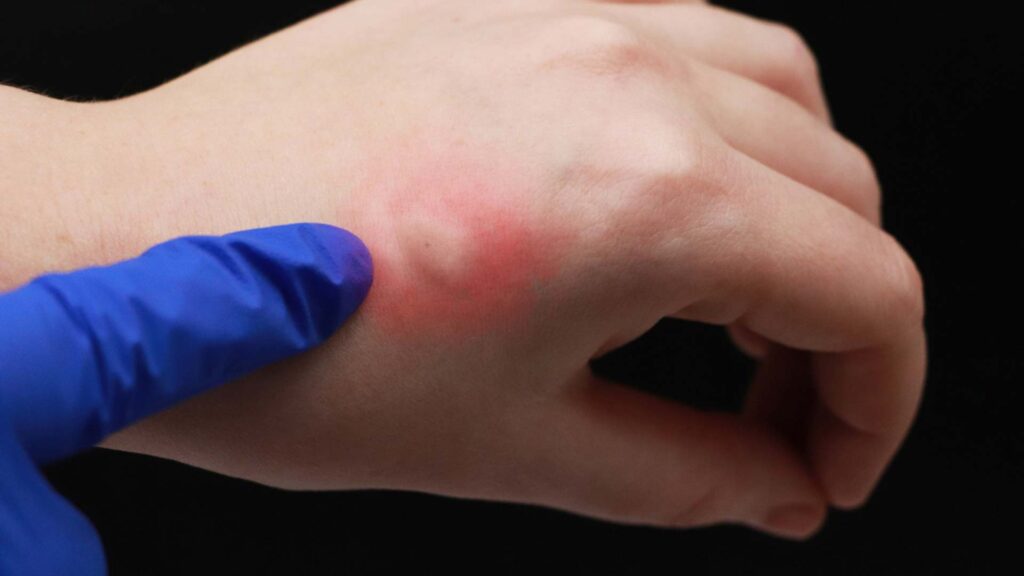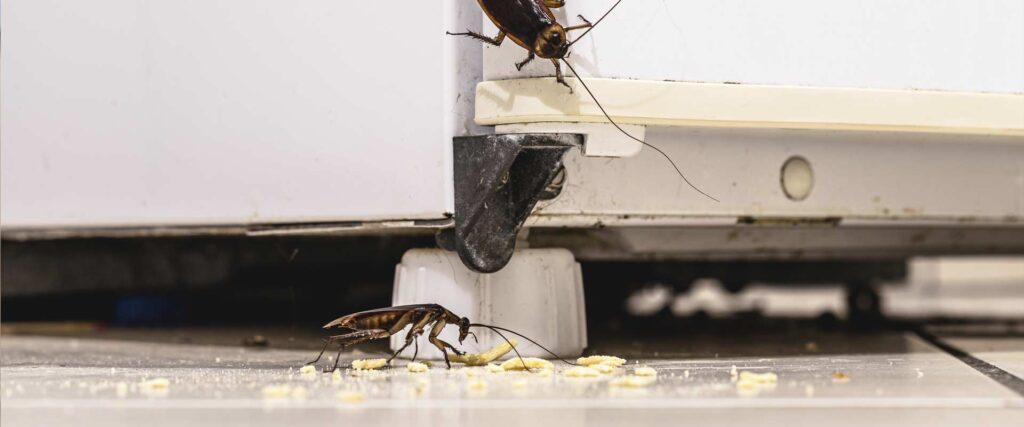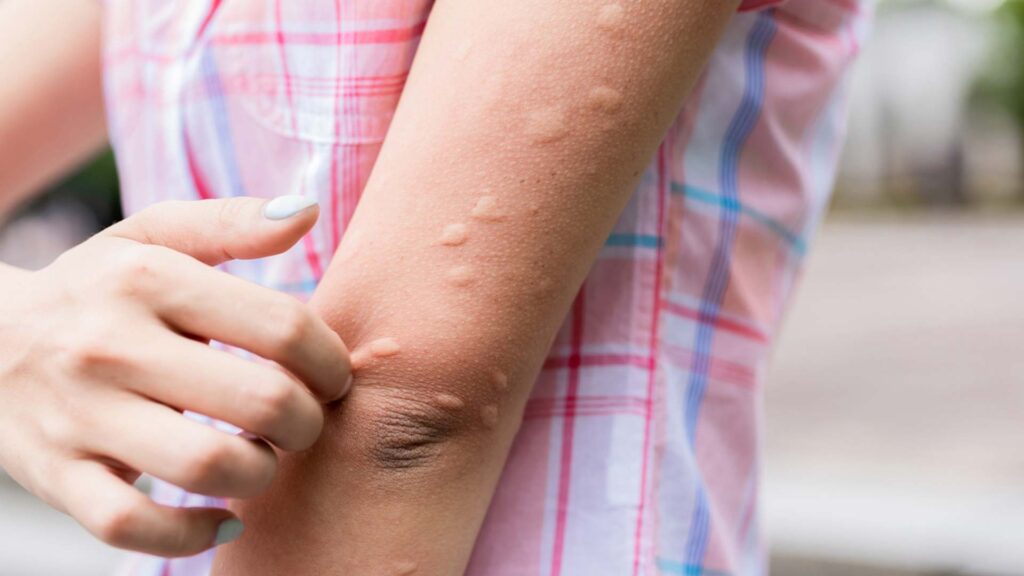Spider bites vs. Mosquito bites
Yes, ants can cause structural damage, particularly carpenter ants, which are known for their ability to excavate wood to create their nests. Unlike termites, carpenter ants do not eat wood but remove it to expand their living areas, potentially weakening the structural integrity of buildings over time. While not all ant species pose a threat to structures, identifying and addressing a carpenter ant infestation early is crucial to prevent significant damage. Homeowners should watch for signs like sawdust-like shavings and large, winged ants, which indicate the presence of these wood-damaging pests.

Table of Contents
- The Mosquito Bite: A Common Nuisance
- Spider Bites: Rare but Potentially Serious
- Distinguishing Between the Bites
- Prevention and Protection
- When to Seek Medical Attention
- Navigating the Intricacies of Insect Bites in Our Homes
- Frequently Asked Questions About The Difference Between Mosquito Bites and Spider Bites
Spider bites and mosquito bites are common concerns in homes, each presenting distinct characteristics. Mosquito bites typically appear as small, red, itchy bumps, often isolated and round, caused by an allergic reaction to mosquito saliva. Spider bites, less common, may show as two puncture marks and can range from harmless to serious, depending on the spider species. While most mosquito and spider bites are treatable at home, severe symptoms like intense pain, difficulty breathing, or fever after a bite warrant immediate medical attention. Understanding and distinguishing these bites are key to effective treatment and prevention.
In the sanctity of our homes, where safety and comfort are paramount, we often overlook the subtle yet persistent presence of nature’s less desirable elements. Among these, insect bites stand out as a common yet frequently misunderstood concern. Two of the most typical perpetrators in residential settings are spiders and mosquitoes. Each, with their distinct characteristics and implications, poses unique challenges to homeowners.
The mere mention of spider and mosquito bites often evokes a sense of unease. This reaction is rooted in a blend of myth, misunderstanding, and genuine health concerns. While mosquitoes are often dismissed as mere nuisances, their bites can be more than just an itchy inconvenience. They are vectors for a range of diseases, some of which have significant health implications. On the other hand, spiders, often feared for their venomous potential, are largely misunderstood. The reality is that spider bites are rare and frequently misattributed.
This dichotomy of danger and misconception underscores the need for clarity and knowledge. Homeowners, in their quest to maintain a healthy and safe living environment, must navigate the fine line between alarm and awareness. Understanding the differences between spider and mosquito bites is not just about identifying the physical marks they leave. It’s about comprehending the broader implications of these encounters – from the immediate physical reactions to the potential health risks they carry.
Moreover, this understanding extends beyond mere identification. It encompasses a range of proactive strategies and responses. From simple preventive measures to recognizing when professional medical intervention is necessary, the knowledge of what these bites entail and how to deal with them is an essential aspect of modern home safety.
In this article, we delve into the nuances of spider and mosquito bites. We aim to demystify these common household concerns, providing homeowners with the information they need to effectively manage and prevent these unwelcome intrusions. By doing so, we not only address the immediate discomforts these bites can cause but also contribute to the broader effort of maintaining health and safety within the home.
The Mosquito Bite: A Common Nuisance
Mosquito bites, a nearly ubiquitous experience for homeowners, are more than just a minor annoyance. These bites, often manifesting as small, red, and itchy bumps, are the result of female mosquitoes feeding on human blood, necessary for their egg production. The itchiness and irritation arise not from the bite itself, but from an allergic reaction to the mosquito’s saliva, which acts as an anticoagulant to facilitate feeding.
The appearance of mosquito bites can vary among individuals, influenced by the body’s reaction to the saliva. Typically, the immediate reaction is a raised, reddish welt, becoming increasingly itchy within hours. For those with heightened sensitivity, these bites can swell significantly, forming larger welts or hives.
Beyond the discomfort, mosquitoes are vectors for a range of diseases. In different parts of the world, they transmit serious illnesses such as malaria, dengue fever, West Nile virus, and Zika virus. The risk of disease transmission depends largely on geographic location, climate, and the presence of specific mosquito species.
Prevention plays a crucial role in mitigating the nuisance of mosquito bites. Homeowners are advised to eliminate standing water, a breeding ground for mosquitoes. This includes checking rain gutters, plant saucers, and bird baths. Proper use of window screens and mosquito nets, especially during sleeping hours, provides a physical barrier against these pests.
Insect repellents are a critical line of defense. Products containing DEET, Picaridin, or oil of lemon eucalyptus have been proven effective. It’s important to follow the instructions on repellent products, especially when applying them to children.
For those who prefer a more natural approach, certain plant oils and extracts, like citronella, may offer some reprieve, though their effectiveness is generally lower compared to chemical repellents.
When bitten, treatment focuses on relieving the itch and preventing infection. Over-the-counter antihistamine creams or oral antihistamines can reduce itching and swelling. A cold compress can provide immediate, albeit temporary, relief. It’s important to resist the urge to scratch, as this can break the skin and lead to infection.
While mosquito bites are a common aspect of life, particularly in warmer months, understanding their nature and taking proactive measures can greatly reduce their frequency and impact. With the right strategies, homeowners can enjoy their living spaces with minimal interference from these persistent pests.
Spider Bites: Rare but Potentially Serious
Spider bites, while less common than mosquito bites, carry a potential for serious health concerns. The majority of spiders found in homes are harmless to humans, but there are exceptions. Understanding the nature of spider bites, recognizing the signs of a dangerous bite, and knowing how to respond are essential for maintaining a safe home environment.
Most spiders are either incapable of piercing human skin or are not aggressive enough to bite humans unless threatened. In fact, many reported cases of spider bites are often misattributions, where the actual cause might be another insect bite or a skin infection.
In North America, the primary spiders of concern are the black widow and the brown recluse. The black widow is identifiable by its shiny black body and the distinctive red hourglass shape on its abdomen. The brown recluse is known for its violin-shaped marking on its back.
The symptoms of a venomous spider bite can vary depending on the species and the individual’s reaction to the venom. Common symptoms include:
- Immediate pain or burning sensation at the bite site.
- Redness, swelling, and the development of a target-shaped lesion.
For black widow bites, symptoms can escalate to muscle cramps, abdominal pain, and difficulty breathing.
Brown recluse bites can lead to severe pain, fever, chills, and in rare cases, necrosis (death of skin and underlying tissue).
First Aid for Spider Bites
For non-venomous spider bites, the first aid is straightforward:
- Wash the area with soap and water.
- Apply a cold compress to reduce swelling.
- Over-the-counter pain relievers can alleviate discomfort.
For suspected venomous spider bites:
- Remain calm and limit movement to prevent the spread of venom.
- Apply a cold compress.
- Seek immediate medical attention, especially if systemic symptoms develop.
Regular home maintenance can reduce the likelihood of encountering spiders:
Keep your home, especially basements, attics, and garages, clean and clutter-free.
Seal cracks and gaps in the walls, windows, and doors.
Inspect and shake out clothing, shoes, and bedding that have been in storage.
Use caution when moving boxes or items where spiders may hide.
While spider bites are rare and often less severe than commonly feared, certain species can pose a serious health risk. Awareness of the types of spiders in your area, recognizing the signs of a venomous bite, and taking preventive measures can greatly reduce the risks associated with spider bites. In the event of a bite, proper identification and response are crucial for ensuring safety and health in the home.
Understanding and Responding to Spider Bites
| Feature | Non-Venomous Spider Bites | Venomous Spider Bites (Black Widow/Brown Recluse) |
| Appearance of Bite | Small red bump, often with no distinct markings | Two puncture marks; Black widow: redness and swelling; Brown recluse: target-shaped lesion |
| Immediate Symptoms | Mild pain, itching, or swelling | Intense pain at bite site, swelling, redness |
| Progressive Symptoms | Symptoms usually remain mild | Black widow: Muscle cramps, abdominal pain, difficulty breathing; Brown recluse: Fever, chills, necrosis at bite site |
| First Aid | Clean with soap and water, apply cold compress, use pain relievers | Apply cold compress, limit movement, seek immediate medical attention |
| Prevention Tips | Keep homes clean, reduce clutter, seal entry points | Same as non-venomous, plus extra caution in storage areas and while handling seldom-used items |
| Risk of Serious Complications | Low | High, especially if left untreated |
| Recommended Action if Bitten | Monitor the bite for signs of infection | Immediate medical consultation, especially if systemic symptoms appear |
Distinguishing Between the Bites
Differentiating between spider and mosquito bites is essential for appropriate treatment and peace of mind. While both can be bothersome, their characteristics and implications vary significantly.
Mosquito Bites
If you develop symptoms like fever, severe headache, or body aches.
In case of an allergic reaction, such as hives or difficulty breathing.
Spider Bites
If bitten by a suspected venomous spider (e.g., black widow, brown recluse).
If you experience severe pain, difficulty breathing, or a spreading rash.
For any bite that becomes infected (increased redness, swelling, or pus).
Mosquito bites are most recognizable by their immediate reaction. Typically, within minutes of a bite, a raised, reddish welt appears. This is accompanied by an unmistakable itchiness, a result of the body’s allergic reaction to the mosquito’s saliva. These bites are usually random in their placement, often occurring on exposed skin – legs, arms, and neck are common targets.
A key characteristic of mosquito bites is their singular nature. They often appear alone or sporadically scattered, especially if the exposure to mosquitoes was brief. In environments with high mosquito activity, however, multiple bites may cluster in one area.
Spider bites, in contrast, are less common and can be more difficult to identify. One distinguishing feature is the appearance of the bite itself. Many spider bites present as two small puncture marks, a result of the spider’s fangs. However, this is not always visible, especially with smaller spiders.
Unlike mosquito bites, spider bites may not cause immediate pain or discomfort. Some individuals may not even realize they’ve been bitten until symptoms develop. When they do, the area around a spider bite can become red and swollen. In non-venomous cases, these symptoms are typically mild and localized.
For bites from venomous spiders like the black widow or brown recluse, the symptoms can be more severe and progress rapidly. These may include intense pain at the bite site, muscle cramps, fever, chills, and in some cases, a necrotic wound, particularly with brown recluse bites. The severity of these symptoms necessitates immediate medical attention.
Another aspect to consider is the environment and timing. Mosquitoes are more active during dusk and dawn and in humid, warm conditions. Spiders, however, may bite when disturbed or threatened, often in hidden or undisturbed areas like garages, woodpiles, or closets.
Recognizing the differences between spider and mosquito bites is key in determining the appropriate response. While mosquito bites are generally more of a nuisance, spider bites, especially from venomous species, can pose a significant health risk. Awareness of these differences aids in prompt and effective treatment, ensuring safety and well-being in the home environment.
Prevention and Protection
Preventing mosquito and spider bites in the home environment requires a multifaceted approach. For mosquitoes, the key is to disrupt their breeding and living habitats. Regularly drain and clean items that collect water, such as bird baths, pet water bowls, and plant saucers, as these are prime breeding grounds. Installing fine mesh screens on windows and doors can effectively keep mosquitoes out. When outdoors, especially during dusk and dawn when mosquitoes are most active, wearing long-sleeved shirts and pants provides a physical barrier against bites. The use of fans can also be effective, as mosquitoes are weak flyers and the air circulation hinders their movement.
In the case of spiders, prevention focuses on making your home less inviting to these arachnids. Regular house cleaning is essential; vacuuming and dusting corners and hidden areas remove spiders and their webs. Pay special attention to basements, attics, and garages, where spiders are more likely to reside. Using essential oils like peppermint, tea tree, or eucalyptus can act as natural deterrents, as spiders dislike these scents. For outdoor areas, keep shrubs and trees trimmed away from the house, and consider using yellow or sodium vapor light bulbs for outdoor lighting, which are less attractive to the insects that spiders feed on. Sealing cracks and gaps in the home’s exterior prevents spiders from entering.
Both spiders and mosquitoes are attracted to certain conditions and environments. By understanding and altering these conditions, homeowners can significantly reduce the likelihood of bites. Regular maintenance and a proactive approach are key in creating a less hospitable environment for these pests, ensuring a safer and more comfortable home.
When to Seek Medical Attention
The decision to seek medical attention for insect bites, though often straightforward, can become critical under certain circumstances. For mosquito bites, the need for medical intervention is rare but should be considered if there are signs of a severe allergic reaction or symptoms indicative of mosquito-borne illnesses. Symptoms such as difficulty breathing, swelling of the lips or throat, or a sudden onset of fever, severe headache, and joint pains following a mosquito bite necessitate immediate medical attention. These could be signs of serious conditions like encephalitis, meningitis, or dengue fever, particularly in areas where these diseases are prevalent.
In the case of spider bites, the urgency for medical care depends largely on the species of spider and the individual’s reaction to the bite. While most spider bites are harmless, bites from venomous spiders like the black widow or brown recluse require prompt medical attention. Symptoms such as intense pain at the bite site, abdominal cramping, muscle spasms, blisters, or a spreading ulcer at the bite site are alarming signs. Additionally, if there is uncertainty about the type of spider, if the victim is a child, elderly, or has a compromised immune system, or if symptoms progressively worsen, it is crucial to seek medical care. Timely medical intervention can prevent complications and ensure appropriate treatment, such as antivenom for certain types of spider bites.
Navigating the Intricacies of Insect Bites in Our Homes
In the intricate dance of cohabitation with nature, homeowners find themselves facing various challenges, among which insect bites stand out as both common and concerning. The journey towards understanding and managing the risks associated with spider and mosquito bites is not just about distinguishing between these two pests, but also about fostering an environment that prioritizes health and safety.
The significance of this knowledge extends beyond mere identification. It empowers homeowners to take proactive steps in safeguarding their homes and their health. By recognizing the signs and symptoms of different bites, individuals can make informed decisions about treatment and prevention, thereby minimizing discomfort and potential health risks.
Moreover, this understanding underscores a broader perspective on our interaction with the natural world. Our homes, though sanctuaries, are not isolated from the ecosystems surrounding them. The presence of spiders and mosquitoes reminds us of our continuous interaction with the environment. It prompts a balanced approach to pest control, one that respects ecological systems while protecting our living spaces.
In the context of home safety, the focus often shifts to immediate, tangible threats, such as fire or structural hazards. However, the subtler aspects, like insect bites, deserve equal attention. They represent a more pervasive, albeit less conspicuous, risk to our well-being. Educating ourselves about these risks forms a critical component of comprehensive home safety.
Furthermore, the conversation about spider and mosquito bites touches on broader public health concerns. In an era where diseases can spread rapidly across regions, understanding vectors like mosquitoes becomes crucial. It’s not just about alleviating itchiness or discomfort; it’s about being aware of and contributing to larger efforts in disease prevention and control.
The journey of understanding spider and mosquito bites in our homes is multifaceted. It’s about immediate action and long-term prevention, personal safety and public health, and respecting the delicate balance between our living spaces and the natural world. As homeowners, our role in this journey is proactive and informed, ensuring that our homes remain safe havens in the truest sense. This knowledge not only enhances our ability to protect ourselves and our families but also contributes to a more harmonious coexistence with the natural world around us.
Frequently Asked Questions About The Difference Between Mosquito Bites and Spider Bites
How can I tell if I’ve been bitten by a spider or a mosquito?
Mosquito bites typically appear as small, red, itchy bumps and are often isolated. Spider bites might not be immediately noticeable but can present as two puncture marks. If bitten by a venomous spider, symptoms can escalate, including severe pain or a spreading rash.
Are spider bites more dangerous than mosquito bites?
Most spider bites are harmless, but bites from venomous spiders like the black widow or brown recluse can be serious. Mosquito bites are generally less dangerous but can transmit diseases like West Nile virus and Zika virus, depending on the region.
What should I do if I get bitten by a mosquito?
For mosquito bites, applying topical antihistamines or ice can help alleviate itching. Keeping the bite clean and avoiding scratching will prevent infection.
What are the immediate steps to take after a spider bite?
Clean the area with soap and water and apply a cold compress to reduce swelling. If bitten by a venomous spider, or if you experience severe symptoms like intense pain or abdominal cramping, seek medical attention immediately.
How can I prevent mosquito bites at home?
Eliminate standing water where mosquitoes breed, use window screens and mosquito nets, and apply insect repellents containing DEET or Picaridin.
What are effective ways to prevent spider bites?
Keep your home clean and clutter-free, seal cracks and crevices, and be cautious when handling items stored in areas like garages or attics.
When should I see a doctor for an insect bite?
Seek medical attention if you experience severe symptoms like difficulty breathing, a spreading rash after a spider bite, or symptoms like fever or severe headache after a mosquito bite.
Can both spider and mosquito bites cause allergic reactions?
Yes, both can cause allergic reactions. Mosquito bites commonly cause minor reactions like itching, while spider bites can sometimes lead to more severe reactions, especially if the spider is venomous.
Are children more susceptible to complications from these bites?
Children may be more sensitive to bites, and their reactions can be more pronounced. It’s important to monitor their symptoms and seek medical advice if necessary.
How can I differentiate a mosquito bite from other insect bites?
Mosquito bites are usually round, red, and become itchy soon after the bite. They are distinct from bites of other insects like fleas or bedbugs, which often appear in clusters or lines.




